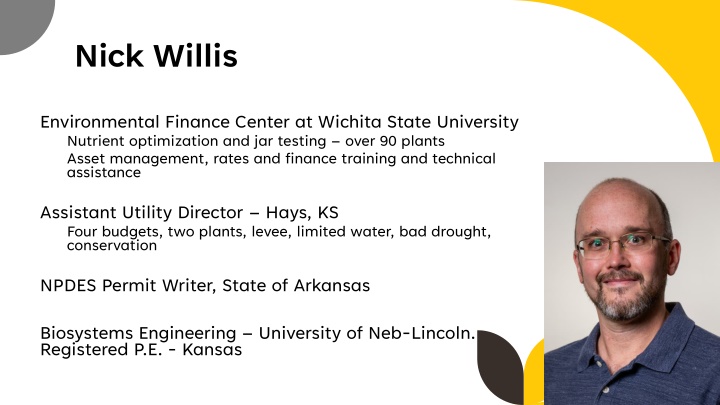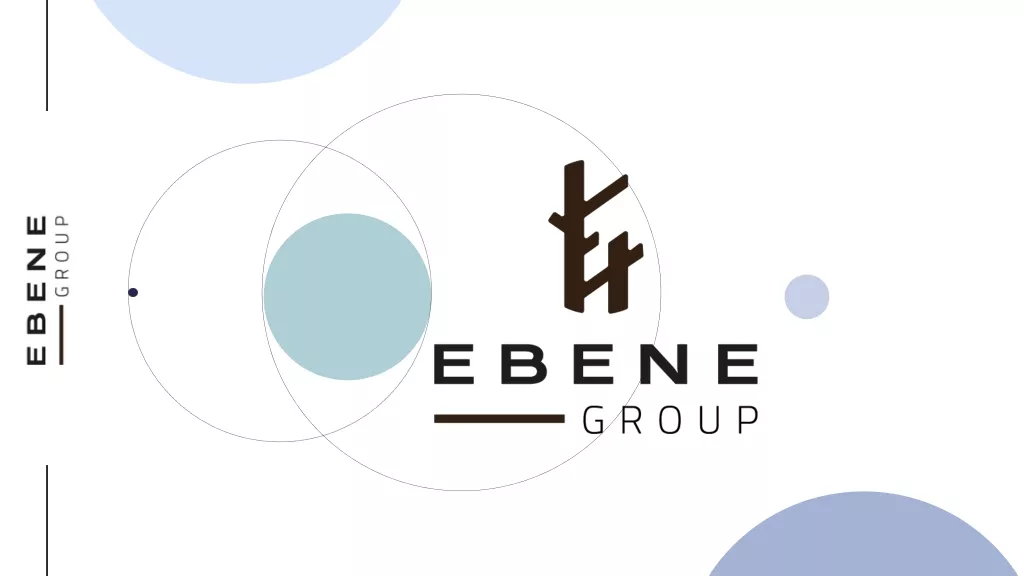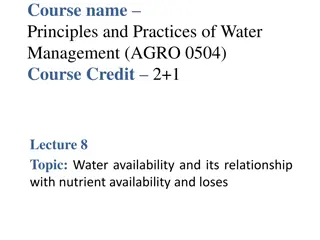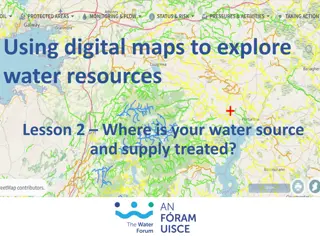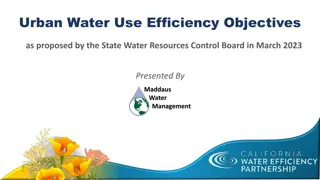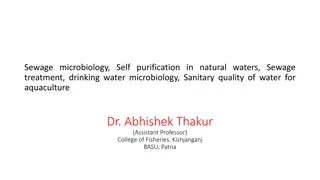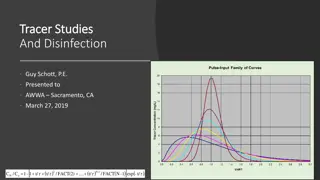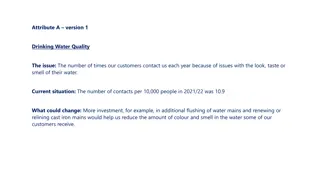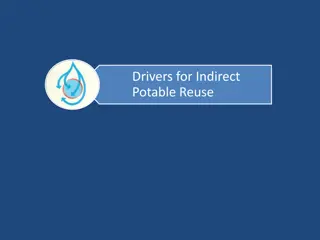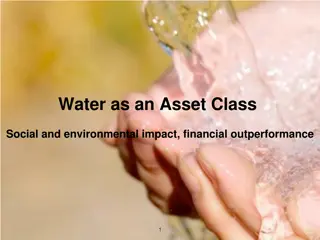Environmental Finance and Water Treatment Case Studies
Explore real-world scenarios in water treatment plants, focusing on nutrient optimization, nitrogen reduction, and phosphorus removal. Learn about innovative approaches, challenges faced, and outcomes achieved in these facilities.
Download Presentation

Please find below an Image/Link to download the presentation.
The content on the website is provided AS IS for your information and personal use only. It may not be sold, licensed, or shared on other websites without obtaining consent from the author.If you encounter any issues during the download, it is possible that the publisher has removed the file from their server.
You are allowed to download the files provided on this website for personal or commercial use, subject to the condition that they are used lawfully. All files are the property of their respective owners.
The content on the website is provided AS IS for your information and personal use only. It may not be sold, licensed, or shared on other websites without obtaining consent from the author.
E N D
Presentation Transcript
Nick Willis Environmental Finance Center at Wichita State University Nutrient optimization and jar testing over 90 plants Asset management, rates and finance training and technical assistance Assistant Utility Director Hays, KS Four budgets, two plants, levee, limited water, bad drought, conservation NPDES Permit Writer, State of Arkansas Biosystems Engineering University of Neb-Lincoln. Registered P.E. - Kansas
Herington Testing Before Upgrades Old Activated Sludge Will be replacing: Blowers Aerators Headworks Four Parallel Basins
Limited Trials in Herington Can nitrates be lowered? without recycle to dedicated anoxic zone without blower cycling Let s try! 3
Reduce Nitrates via RAS Recycle Return Activated Sludge about 40% of plant influent flow Turn off first aerator in two (of 4) basins Monitor nitrates in outflow of basins In-house tests showed 2-3 mg/l decline in nitrates in modified basins No ammonia increase
Takeaways from Herington New operator Gained education and experience Upgrades should meet 10 mg/l TN Partial denitrification of RAS can move needle 5
New Build Horton Newly built Biological Nutrient Removal Facility (BNR) Not achieving good phosphorus removal in first months of operation Operator training and diagnostics
Improve Biological Phosphorus Removal New AeroMod plant -2023 Bio-P basin bottom center Mediocre phosphorus removal Monitored ORP Reduced mixing from 24/7 to 1 hour on, one hour off Photo from Microsoft Maps.
Goals for Horton Compliance with Total Phosphorus No chemical addition
Results Source: EPA ECHO Database
Horton TP lbs./day. Future Limit 2.07 lbs/day annual rolling average 10
Horton Future Operations Monitor ORP May need to: Monitor nitrates into anaerobic zone through RAS Better control nitrates in cycling of Aeromod basins Gain understanding of internal phosphorus flows from biosolids processing 11
Concordia Right-sizing of basins Control of air input Consistent Nitrogen and Phosphorus performance
Right-sizing tankage Concordia s population has fallen since plant build Plant built with growth in mind Too big leads to old sludge and related problems
Right-sizing tankage and treatment Took inside tank offline Operate on a single clarifier Operate low MLSS concentrations Summer ~1500 to 2000 mg/l
Controls Control air with Oxidation Reduction Potential Create zones within plant Aerobic, anoxic, anaerobic No baffles/separation of tankage Meet expected mass-based limits
Concordias plant creates all of these environments without physical separations Image from Shengan Xu, 2014 18
